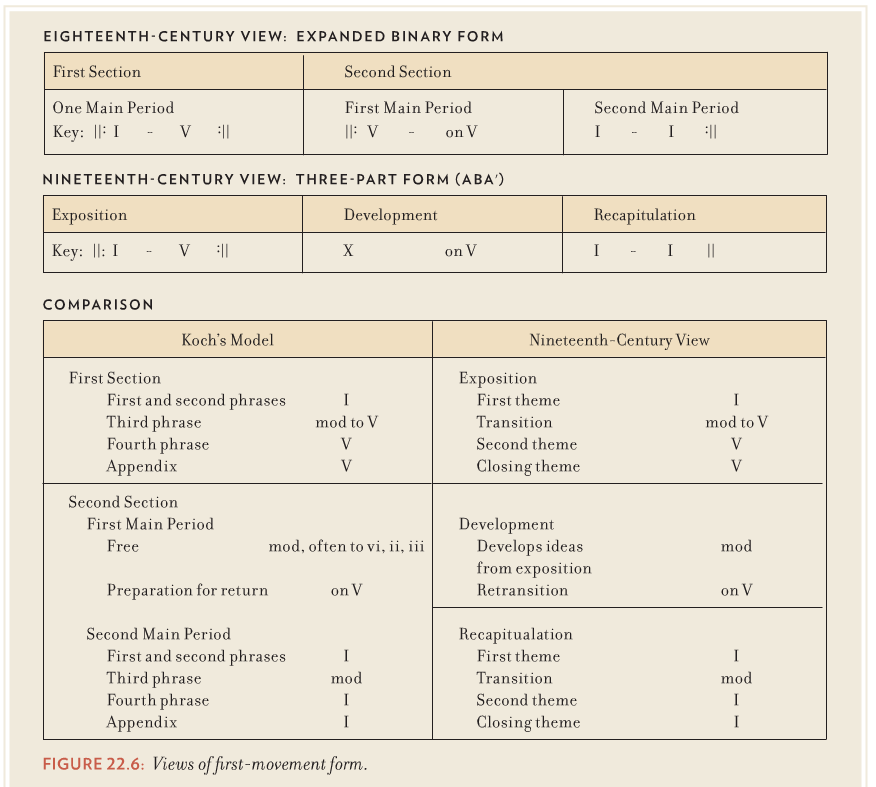In the second half of the eighteenth century there evolves in central Europe a form connected to the so called Viennese Classical School, represented by Haydn, Mozart and the young Beethoven. This form is the Sonata Form, also called first-movement form or sonata-allegro form. It contains three form sections: ||: exposition :||(:) development - recapitulation (:)||
The essence of this form consists of the telling of an abstract story by playing with themes, keys and harmonies, within a general known framework. During this process the composer plays a game with the expectations of the listener. Charles Rosen characterizes sonata form or sonata style as a "tonal drama".
From the perspective of tonality the general working scheme runs as follows:
exposition
- choose a key and confirm it with clear cadence
- modulate to a related key
- confirm this new key with a clear cadence
- repeat anything until this pointand then go on
start of development
- return to the key of departure, but:
- start the journey with a surprising/special event
- don't take the shortest route, but make a detour with a number of surprises
- when you are almost "at home" give a warning in the form of an extended dominant
recapitulation
- when you have arrived at "home", stay there.
The most important onal areas or keys are combined with a characteristic melody, or theme.
Themes are subjected to all kinds of "manipulations": this is characteristic for the development.
Themes become fragmented, motives are subjected to all kinds of manipulation: variation, imitation, sequencing, and so on.
From the perspective of harmony the development is the most turbulent form section: there is continuous modulation, wuth (elaborate)use of chromaticism. A development mostly consists of several episodes with various techniques applied.
Diether de la Motte came up with characterizing (psychological) functions of the form sections:
- exposition: convince
- development: surprise
- recapitulation: convince
Key terms:
Key, cadence, modulation, sequence, theme, motif, chromaticism, pedal point.
Exposition, development, recapitulation, coda.

Burkholder, J. P., Grout, D. J., & Palisca, C. V. (2014). A history of western music. New York: W.W. Norton & Compay.



